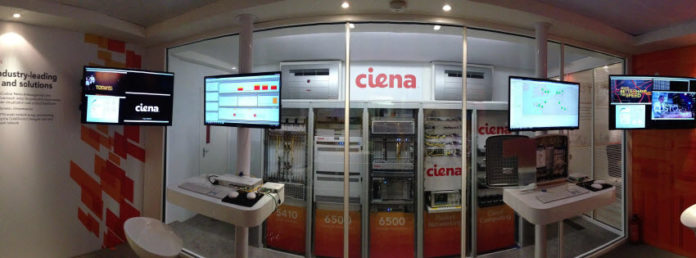Telstra, Ericsson and Ciena have commercially launched wavelength services based on 400G technology, significantly increasing Telstra’s network capacity whilst reducing power consumption, footprint and time to market for customers.
This upgrade responds to the unprecedented capacity requirements that have been seen during the COVID-19 pandemic, ensuring Telstra can quickly and efficiently scale the core network capacity to meet capacity uplifts, while preparing Telstra’s network for the next generation of technology demands, including those from 5G, network slicing and edge compute.
Also, this upgrade coincides with the successful trials in Telstra’s live network in August to deliver 800G wavelengths between two metropolitan data centres, paving the way for even further efficiencies and additional bandwidth for Telstra’s transmission network.
Building on this success, 700G per wavelength was also achieved between Melbourne and Sydney during that trial – a distance of greater than 1,000km.
“By upgrading our optical transmission networks with 400G technology, Telstra will be able to cater for capacity demands of up to 400% of what was previously achievable,” said Chris Meissner, Telstra executive for transport, IP core and edge engineering. “The upgrade enables us to rapidly deliver services to customers at scale without fibre builds, decreasing the time to market from weeks, to days.”
Meanwhile, Vodafone NZ has completed a six-month project to upgrade its entire international optical network, enabling a dedicated, resilient and diverse set of internet pathways upon which international data can be transferred at millisecond speed.
This means Vodafone NZ is now the only operator in New Zealand offering exclusive-use optical capacity across all three international fibre optic cables — Tasman Global Access (TGA), Southern Cross and Hawaiki — providing a service that large organisations are increasingly using to enable dedicated, high speed and high capacity data transfer between countries.
Andrew McDonald, head of wholesale at Vodafone NZ, said this rebuild offers a step-change in how they can manage internet traffic, connecting all three major submarine cables linking New Zealand with Australia, the South Pacific and North America.
“This is important for applications like video calling, where enterprises need to transmit video from thousands of online conference calls between locations across New Zealand and Sydney in millisecond speed,” said McDonald.
















